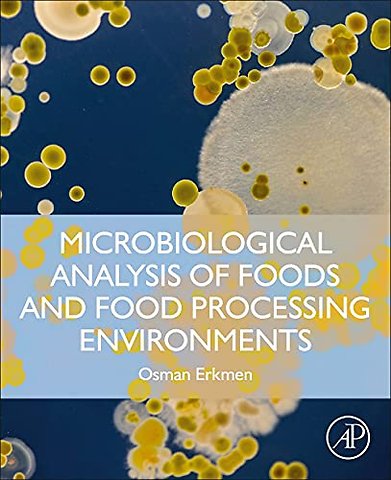<p>SECTION I General Food Microbiology Analyzing Practices<br>1. Sampling and Sample Preparation Techniques<br>2. Plate Count Techniques<br>3. Direct Microscopic Count Techniques<br>4. Most Probable Number Technique<br>5. Membrane Filter Techniques<br>6. Yeasts and Molds Counting Techniques<br>7. Sanitation Detection Techniques in Food Processing Plants</p> <p>SECTION II Counting of Important Microbial Groups from Food Products<br>8. Injured Microorganisms and Viable but non-Culturable Cells<br>9. Counting of Cold-Tolerant Microorganisms <br>10. Counting of Mesophilic and Thermophilic Sporeformers <br>11. Counting of Halophilic, Osmophilic and Xerophilic Microorganisms<br>12. Counting of Thermoduric Microorganisms</p> <p>Section III Isolation and Counting of Indicator and Pathogenic Microorganisms<br>13. Isolation and Counting of Coliforms and Escherichia coli<br>14. Isolation and Counting of Enterococcus<br>15. Isolation and Counting of Salmonella<br>16. Isolation and Counting of Listeria monocytogenes<br>17. Isolation and Counting of Campylobacter jejuni<br>18. Isolation and Counting of Yersinia enterocolitica<br>19. Isolation and Counting of Bacillus cereus<br>20. Isolation and Counting of Clostridium perfringens<br>21. Isolation and Counting of Staphylococcus aureus<br>22. Isolation of Clostridium botulinum<br>23. Isolation and Counting of Vibrio<br>24. Isolation and Counting of Shigella dysenteriae<br>25. Isolation and Counting of Brucella<br>26. Isolation and Counting of Aeromonas hydrophila<br>27. Isolation and Counting of Plesiomonas shigelloides</p> <p>SECTION IV Detection of Toxigenic Fungi, Viruses and Parasites<br>28. Isolation and Counting of Toxigenic Fungi<br>29. Isolation of Foodborne and Waterborne Viruses, and Typing Techniques<br>30. Detection of Foodborne and Waterborne Parasites</p> <p>SECTION V Identification of Foods Safety and Quality<br>31. Analysis of Milk and Milk Products<br>32. Analysis of Meat, Poultry and their Products<br>33. Analysis of Fermented Foods <br>34. Analysis of Fruits, Vegetables and Precooked Frozen Foods <br>35. Analysis of Fruit Juice and Concentrate Fruits<br>36. Analysis of Eggs and Egg Products <br>37. Analysis of Cereals and Cereal Products<br>38. Analysis of Seafoods<br>39. Analysis of Canned Foods<br>40. Analysis of Salad Dressings and Spices<br>41. Analysis of Bottled Soft Drinks<br>42. Analysis of Bottled and Process Water </p>
